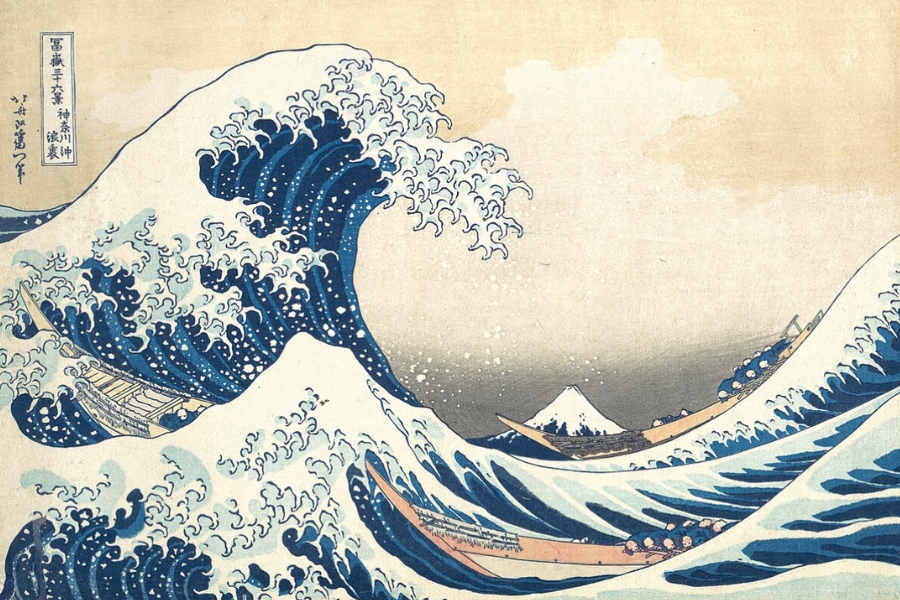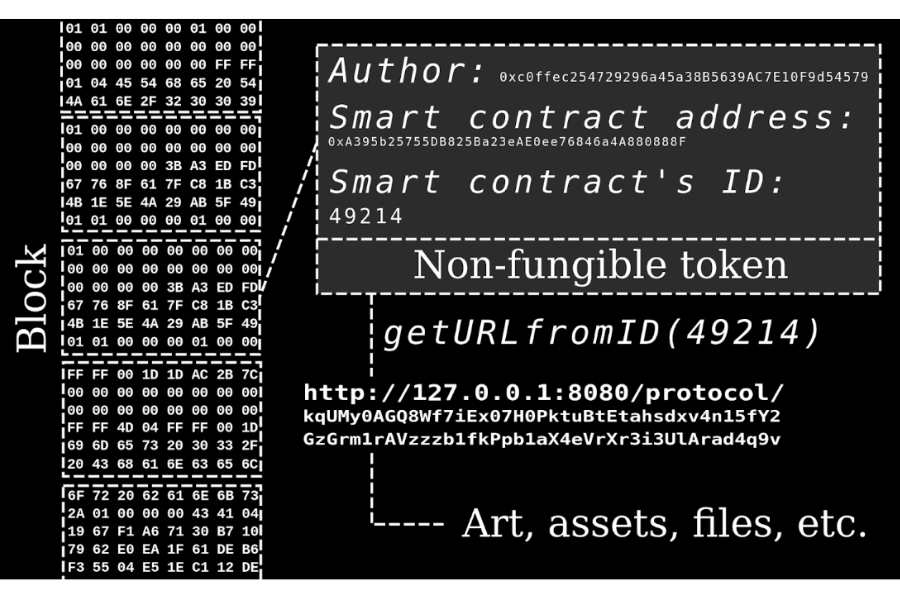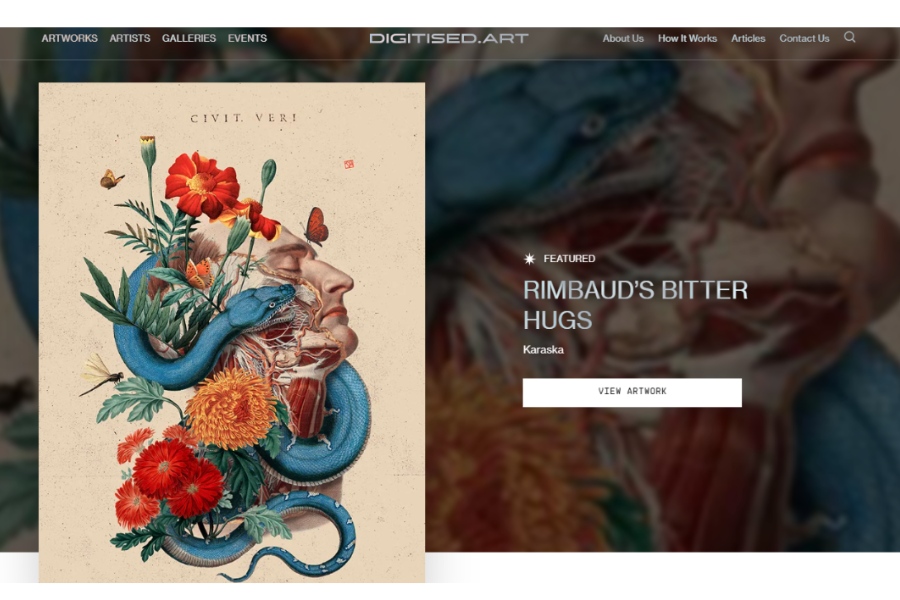The age-old paradigm of acquiring physical art, with its tangible canvases and sculptures, has long dictated the parameters of ownership and provenance. Yet, as we step further into the digital realm, where pixels replace pigments and screens replace galleries, NFTs have emerged as a groundbreaking solution for how one can truly own a piece of digital art.
This article uncovers how these cryptographic tokens have ushered in a new era for artists, collectors, and enthusiasts, reshaping the essence of how we perceive and possess digital art. Join us on this journey into the digital frontier, where NFTs redefine the concept of art ownership, or go to the website and explore even more intricacies of NFT art collecting.
Understanding NFTs
Before delving into the topic of how exactly the notion of digital ownership has changed, anyone interested in the topic should understand its core concept – non-fungible tokens. Based on blockchain technology, they leverage its features to enable organizations and individuals to record their digitized assets on a distributed, transparent, and immutable ledger. Thus, it becomes possible to provide proof of authenticity and ownership in the digital realm. Unlike various cryptocurrencies, each token holds a unique set of characteristics that distinguishes them from other NFTs even if they originate from the same collection. Moreover, they can be traded separately from their physical originals, making them a desirable tool for monetizing physical assets like artworks without concerns over intellectual property.

The Concept of Ownership and How We Perceive It
In the traditional art world, ownership is intricate and multifaceted, encompassing a range of factors such as the physicality, historical significance, and cultural value of a given artwork. In order to hold ownership of a traditional piece, several key elements come into play.
First and foremost, ownership entails physical possession of the artwork, which grants the owner the right to retain the piece in their control, whether it be in a private collection, museum, or gallery. Secondly, provenance plays a crucial role in traditional art ownership as it verifies the authenticity and legitimacy of the artwork by tracing its ownership back to its creation. Thus, historical records or other documentation are held in high esteem within the art world. However, it also involves a formal process of due diligence and ownership transfer, typically requiring time-consuming legal procedures and enormous expenses on transportation or storage. In addition, various fees and intermediaries, such as art dealers or auction houses, can further increase the cost of such deals.
Nevertheless, ownership of traditional art grants owners the right to determine how and where the artwork is displayed or exhibited. The owner may lend the piece to institutions for public viewing or keep it in a private collection. It’s important to note, though, that artists often retain copyright and intellectual property rights, which means that even collectors may not have the freedom to create copies of or transform artworks without their consent.
In addition, traditional art ownership is frequently considered an investment opportunity as artworks can appreciate in value over time, especially if they hold significant cultural or historical significance. While it may sound like an excellent opportunity for expanding one’s wealth, it also entails additional responsibilities for owners of such pieces, including the preservation and safeguarding of the artwork for future generations. Furthermore, they may face legal restrictions regarding the export or sale of culturally significant artworks.
Ultimately, the traditional notion of ownership is often criticized for its exclusiveness. Collectors in traditional art collecting have to establish connections in the industry and build solid relationships before they even get a chance to fight for unique artworks. Furthermore, it requires collectors to invest thousands, if not millions, of dollars in paintings, not to mention the associated fees and costs. In the end, even the emergence of the digital dimension in the art industry hasn’t lowered the threshold but has instead divided the pool of collectors based on their wealth.
How NFTs Change The Notion of Art Ownership
Digital Form
Traditional ownership is closely tied to physical objects such as paintings, sculptures, or other tangible creations. The experience of possessing these articles revolves around having the objects themselves. Conversely, NFT ownership represents ownership of digital assets that can take on various forms, such as digital images, animations, and virtual reality. Instead of possessing a physical object, NFT ownership is established through owning a unique digital token that is linked to the artwork, which makes it more flexible and accessible.
Provenance and Authenticity
In the traditional art world, proving the authenticity of a piece relies on physical documentation, historical records, and the knowledge of art experts. This process can be quite complicated and lengthy. However, with NFT ownership, blockchain technology creates a transparent and unalterable record of ownership and provenance. Every transaction, from the NFT’s creation to its transfer, is documented on the blockchain, ensuring a tamper-proof history of the artwork and simplifying the verification of its authenticity.

Ownership Transfer
Transferring ownership of physical art can be a complex process, often involving legal procedures such as contracts, bills of sale, and intermediaries like art dealers or auction houses. However, the process of transferring ownership for NFTs is significantly simpler. Through blockchain-based platforms, owners can directly transfer their NFTs to others without the need for intermediaries. This streamlined process reduces the administrative complexities associated with traditional art transactions and makes peer-to-peer transactions considerably easier.
Display and Access
Physical art can only be exhibited in specific physical locations such as private residences, galleries, or museums, which limits public access to these assets. On the other hand, NFT ownership allows owners to showcase their digital art to a global audience through online platforms, social media, virtual galleries, and digital exhibitions. Digital art has the potential to reach a much broader and more diverse audience as it transcends geographic boundaries.

Associated Rights
In traditional art ownership, possession of the physical artwork does not automatically include reproduction or alteration rights; copyright and intellectual property rights usually remain with the artist. In contrast, with NFT ownership, artists can embed various permissions and rights directly into the token without compromising their rights to physical assets. They can limit reproduction rights, provide exclusive access to content, or use their digital creations in commerce. This allows artists to exert greater control over their work and receive ongoing compensation for its use.
Rarity and Value
In the realm of traditional art, the value of a piece is typically determined by its scarcity. The fewer similar items there are on the market, the more valuable they become. With NFT ownership, artists now have a novel method for establishing and enforcing scarcity within the digital sphere. By creating a finite quantity of NFTs that represent a specific artwork, each token becomes unique and rare, significantly enhancing the perceived value of digital art.
Global Accessibility
The physical nature of traditional art limits access to those who can visit its location, making it difficult for a global audience to fully appreciate and engage with physical artworks. However, through NFT ownership, digital art can overcome these geographical limitations. This democratizes the art world, making it more inclusive and accessible to people from all corners of the globe, as anyone with an internet connection can access and appreciate digital art. This transformation has paved the way for a more equitable art world, where access to art is no longer limited to the physical location of the artwork.
As it’s evident, NFTs represent a paradigm shift in ownership, especially for digitized art. With their unique technological stack and innovative approaches to art ownership, these assets transform the challenges of the traditional art world into valuable opportunities. We encourage anyone interested in art collecting to give NFTs a chance and experience their true potential firsthand.
CLICK HERE TO DONATE IN SUPPORT OF CULTURAL DAILY’S NONPROFIT MISSION TO COVER ARTS AND CULTURE.
